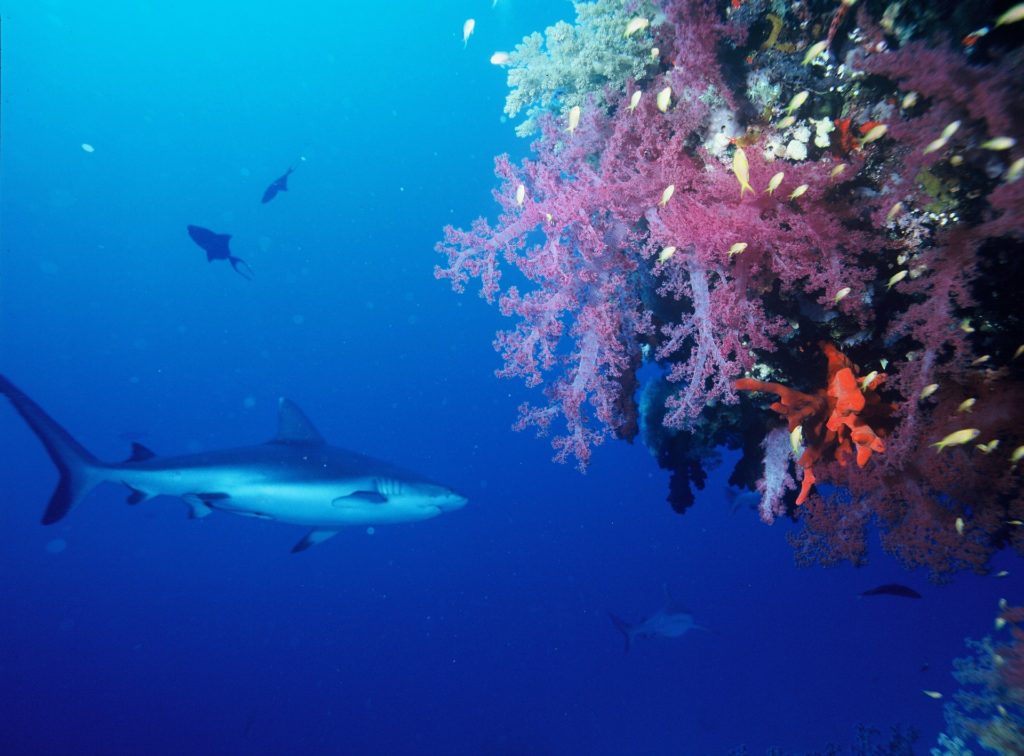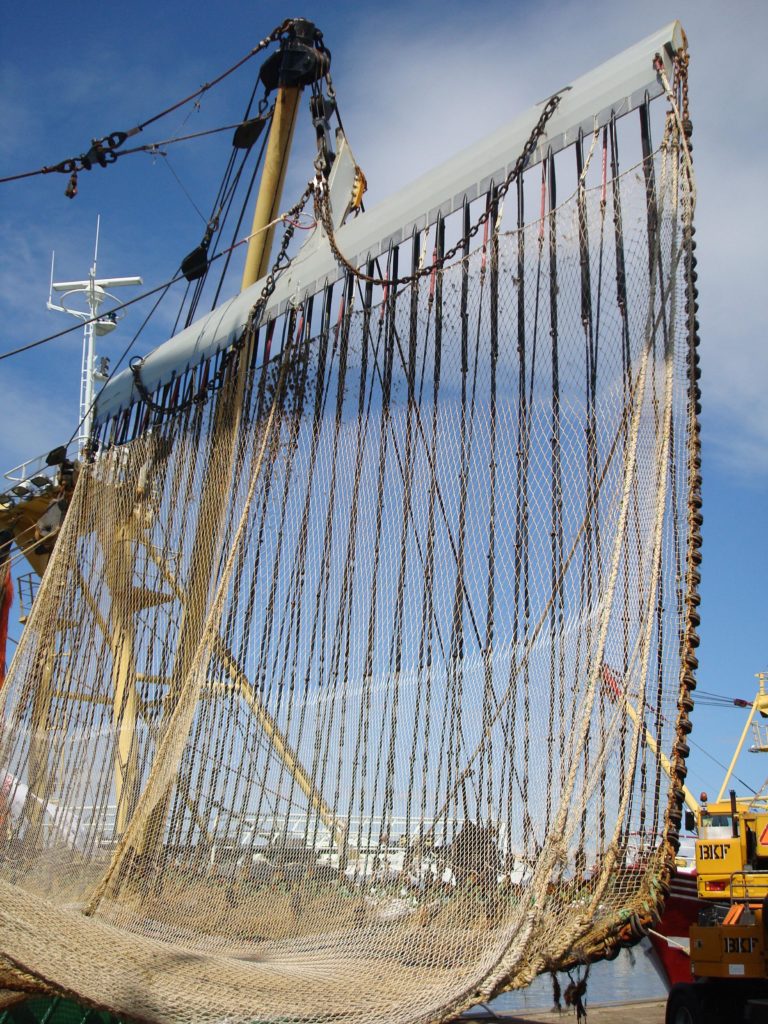El Partido por los Animales convoca a todos a manifestarse en contra de la desastrosa pesca eléctrica
Este 21 de noviembre, la Comisión de Asuntos Marítimos y Pesca del Parlamento Europeo votará sobre la pesca a pulso, también conocido como pesca eléctrica. El Consejo de Ministros de la Unión Europeo quiere limitar esta nueva forma de pesca. En cambio, el gobierno holandés está ejerciendo mucha presión para legalizar la pesca a pulso incondicionalmente. Por lo tanto, la europarlamentaria del Partido por los Animales, Anja Hazekamp, formó junto con varios científicos y ONG un frente para evitarlo. La pesca eléctrica conlleva riesgos innecesarios para la vida marina y en el futuro afectará a todos nosotros. “Por el momento la pesca (eléctrica) sostenible sigue siendo una cuenta de hadas”, según Hazekamp y por lo tanto convoca a todos a firmar la petición en contra de la pesca a pulso.

La controversial pesca a pulso es una técnica para atrapar peces arrastrando hilos eléctricos sobre el fondo del mar que emiten leves choques. Los peces que se encuentran allí, se levantan del fondo y son atrapados en una red de arrastre. Por el momento, la pesca eléctrica es prohibida en la Unión Europea, pero grupos de interés han logrado convencer a la Comisión Europea permitirlo en forma limitada.
Además, el gobierno holandés quiere ir aún más lejos y permitir la pesca a pulso de forma ilimitada como si fuera un método de pesca ‘convencional’. El gobierno de Holanda y los grupos de interés de la pesca pretenden que la pesca a pulso es sostenible y que toma en cuenta el bienestar de los animales. Consideran que la pesca a pulso es igual que las otras técnicas de pesca clásica. Están creando una imagen engañosa y olvidan los aspectos negativos. Pruebas aplicadas a la pesca a pulso muestran que esta técnica puede resultar en daños graves y la muerte de los peces. Además, este método forma un gran riesgo para el ecosistema marino. Al ser expuesto prolongadamente a la electricidad de baja intensidad, es posible que se cambiará la composición química del lecho marino y que se afectará la vida allí. Muchas de las especies de peces son sensibles a la electricidad: tiburones y rayas la utilizan cuando caza.
La desertificación del océano
Otro riesgo es que —por el uso de los equipos más ligeros de la pesca a pulso— es posible pescar en áreas que antes no eran accesibles. Significa que nuestras aguas están en peligro de quedarse vacías. Esto, mientras que en un reporte de las Naciones Unidos se señaló anteriormente que si sigamos así, en el 2050 ya no habrá un solo pez en el océano. En el reporte, los expertos indican que un desastre en el sector pesquero solamente se puede evitar si los gobiernos cortan subsidios a las flotas pesqueras y asignan zonas protegidas para ofrecer más espacio a los peces para así lograr que los ecosistemas y las especies de peces tengan una oportunidad de recuperarse.

El sector pesquero holandesa es cómplice en cuanto al saqueo de las aguas europeas. La sobreexplotación de ciertas especies de peces llega hasta el 88% de los cuales el 30% probablemente no se recuperará jamás. El Partido por los Animales opina que se tienen que prohibir las formas destructivas de pesca (eléctrica o no). Posibles métodos alternativos de pesca solamente se deberían permitir cuando cumplan con los criterios estrictos de la sostenibilidad, poniendo el bienestar de los animales como punto central.
Firma la petición
La europarlamentaria del Partido por los Animales, Anja Hazekamp comenta: “La pesca a pulso tiene consecuencias desastrosas para la frágil flora y fauna submarina. Este método permite la pesca a gran escala, mientras que en realidad debemos reducirla. Las poblaciones de peces en Europa se han disminuido de tal forma que los esfuerzos de la industria pesquera ya no son rentables. En vez de permitir la recuperación de las poblaciones de peces, la industria ha decidido acabar con todas las reservas pesqueras, como señalan los científicos. La pesca a pulso hace que nuestro océano se vuelve un cementerio. Por lo tanto debemos luchar en contra de esto con todos nuestro esfuerzas.”
Hazekamp convoca en colaboración con un grupo de científicos y ONG a todos para firmar la petición en contra de la pesca a pulso. Más de 55 mil personas ya han firmado la petición.
On the 21st of November, the General Fisheries Commission of the European Parliament will vote on controversial pulse fishing, also known as electrofishing. The European Council of Ministers wants to impose restrictions on this new way of fishing, which uses electricity. The Dutch government expressed its displeasure against the restrictions because it lobbied to a great extent to fully legalise pulse fishing. The Party for the Animals’ MEP Anja Hazekamp, together with scientists and NGOs, makes every effort to prevent full legalisation. After all, electrofishing entails imprudent risks for marine life and will threaten the future of us all. “Sustainable (pulse) fishing is currently a myth,” according to Hazekamp. Hazekamp calls on everybody to sign the petition against pulse fishing.

Controversial electric pulse fishing is a catching method that uses electric wires that are pulled across the seabed and release electric pulses. It causes fish to jump up from the seabed so that they can be caught in the trawling net. Technically speaking, electrofishing is prohibited in the European Union but until now, lobbyists have time and again managed to convince the European Commission to permit electric pulse fishing on a limited scale.
The Netherlands wants to go even further now and allow unlimited electric pulse fishing as a ‘conventional’ fishing method. The Dutch government and fishing lobby argue that electric pulse fishing is sustainable and fish-friendly. They consistently compare pulse fishing with classical fishing methods, which gives a misleading view and causes negative aspects to be forgotten. Testing on pulse fishing revealed that this method causes serious damage and the death of fish. Additionally, this method presents a great risk for the marine ecosystem. Long-term exposure to light electricity could, for example, change the chemical composition of the seabed and affect the seabed life. Many fish species are sensitive to electricity: sharks and rays use it when hunting for food.
Desertification of the oceans
Another risk is that – because of the lighter fishing gear that can be used for pulse fishing – they can fish in areas that were previously left alone. This means that our waters are threatened to be overfished even more. This despite the fact that the United Nations previously warned that there won’t be any fish left by 2050 if we continue fishing this way. In that report, experts concluded that the fish disaster can only be avoided if governments start to cut subsidies for fishing fleets and if fish are given more space in oceans, for example by setting up protected zones. That way, the ecosystems and fish species that are in a bad way will really get the chance to recover.

Dutch fishery is partly responsible for the structural overfishing in European waters. No less than 88% of the species of fish is overfished and 30% will more than likely not be able to recover. The Party for the Animals believes that destructive forms of fishing (electric or not) must be banned. Possible alternative catching methods may only be permitted when they comply with strict sustainability criteria. Animal welfare is a key principle in this.
Sign the Petition
The Party for the Animals’ MEP Anja Hazekamp: “Pulse fishing has disastrous effects on all vulnerable underwater flora and fauna. This method makes fishing possible on an even larger scale while we should actually reduce the fishing industry. The fish populations in Europe have decreased to such extent that the current fishing industry efforts are no longer cost effective. Instead of allowing the fish populations to grow again, as scientists advise, the fishing industry decided to deplete the remaining fish reserves in any way possible. Pulse fishing is changing our ocean into a cemetery and we must do everything in our power to oppose to it.”
Hazekamp, together with a group of scientists and NGOs, calls on everybody to sign the petition against pulse fishing. More than 55,000 people have already signed the petition.